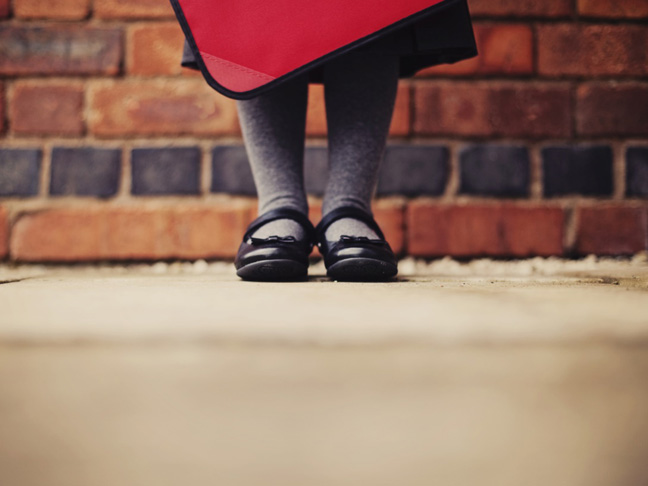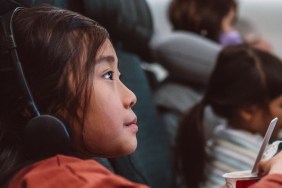I have two children, a 10-year-old daughter and a 12-year-old son on the high functioning side of the Autism spectrum (he struggles with many social cues, does not handle transitions well, and is focused to a fault on certain narrow areas of interest). We first moved our son to the Montessori program from a Catholic school in second grade after extensive research and recommendations from other parents. He was struggling to keep up with the pace of the classroom, was having difficulties transitioning between activities, and suffered from low self-esteem due to his poor academic performance. Something needed to change. We determined his educational environment needed to be less rigid, highlighting his strengths and helping to build upon his unquenchable desire for information. The perfect answer for him seemed to be a faith-based Montessori school.
In fact, we thought we had it made. The Montessori school was everything we had hoped for. The program provided an amazing sense of community without the animosity that so many children I’ve seen have against their teachers. The school prided itself on encouraging outside-the-box thinking, child empowerment, and even had a close relationship with one of the top collegiate universities in the country, allowing the students to take field trips to the campus and participate in lectures with professors.
Our son thrived. The Montessori environment awakened his desire to broaden his horizons, and allowed him the flexibility to move unencumbered by the rules of traditional schooling. His classroom is not set up with desks; instead, the children work on tables, or area rugs that help to define their space. The work is not regimented so that the entire classroom learns the same thing at the same time; instead, children move at their own pace. For example, those who are more advanced in mathematics can move ahead, while others are given the time to master a concept before moving on to the next lesson. He gained confidence, and he began to love learning. After seeing how successful the program was for our son, we decided to move our daughter to the same Montessori school the following year.
However, we were wrong to think that because her brother loved everything about Montessori that she would as well.
The Montessori classroom comprises 30 students of mixed ages—first through third grade in one class, and fourth through sixth grade in another class. Where our son blossomed among the younger kids, enjoying a leadership role in the mostly male student population, our extremely social daughter struggled. Eventually she was able to find a small group of girls to hang out with, but her prospects for a wider, varied group of friends dwindled. She also missed the structure and predictability that she had in her traditional school setting, the personalized space of a desk versus a table, the many electives the traditional school offered that her new school did not, and the limited athletic programs at her new school. Without a gymnasium, the school offered only cross-country running. Gone were the close-knit relationships and camaraderie our daughter experienced with teammates at her old school, as were her opportunities to explore new activities with her peers as she crept closer to middle school.
She was evolving, but her environment wasn’t giving her what she needed to grow. And even worse, her academic performance was suffering as a result.
While our son blossomed into a lover of education over the next few years, she flailed, trying to keep herself afloat. She had loved her traditional program, the structure of the regime, perhaps more than any of us had realized. In an environment designed to empower children, our daughter was unable to develop a weekly working plan for her education and stick to it. She needed the predictability of a classroom where the expectations were clearly communicated, and accountability is required at every turn. She needed someone to not only lead her to the water, but to stand over the proverbial trough and ensure she drank.
In early November, her third year into the program, her performance in school reached an all-time low. We learned that she had submitted the same book report three months in a row, was performing a grade below in math, and had been avoiding all activities involving science and social studies. We were alarmed that her teacher hadn’t reached out to us earlier. In an effort to take control of the situation ourselves, my husband and I established a clear set of requirements for our daughter, emphasizing the need to complete assignments and work to move toward achieving grade level for math through home tutoring. However, after two months of monitoring her progress we realized that our efforts weren’t enough.
After touring multiple schools in the area, we decided to send our daughter, mid-year, back into a faith-based private school with a traditional approach. We selected a different school than she had previously attended, based upon the new school’s ability to provide resources to help her get to where she needed to be academically as a fifth grader. I wish we had caught the issues sooner however we trusted in the Montessori program that ebbs and flows with the child learning speed. I do believe a benefit of sending her to a Montessori program was that we were able to explore her learning style, recognize what she needed to be successful, and ensure she has the proper environment to thrive moving forward.
Our daughter has been in the new school for just over a month, and she’s doing well. She has had no difficulty learning grade-level mathematics. She reads every evening, and she has written numerous essays demonstrating a solid grasp of language arts. I believe the Montessori program did not require her to perform at a higher level, enabling her to do the least amount of work to move ahead. The new program is much more challenging and we are delighted to see that she is succeeding in school again.
The entire experience has taught me that schools need to fit the child, not the other way around. What one child needs to be successful in school is very different from what another child might need. As a parent, it is critical to recognize this, and act accordingly, even if it means a mid-year change in schools. Sometimes parenting means admitting when you’re wrong.
More Mom Confessions:
- Why I Let My Daughter Be a Picky Eater
- All the Things I Secretly Do When My Kids Aren’t Looking
- 24 Things I’ll Never Say in Front of My Daughter
Photo: Getty








